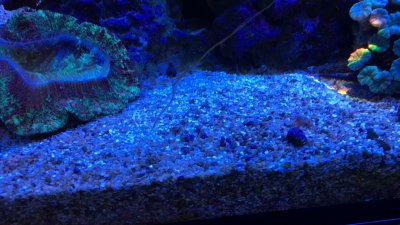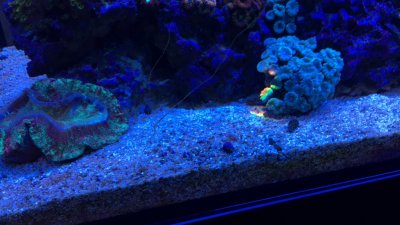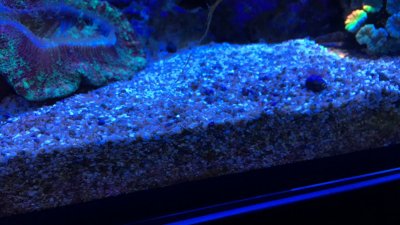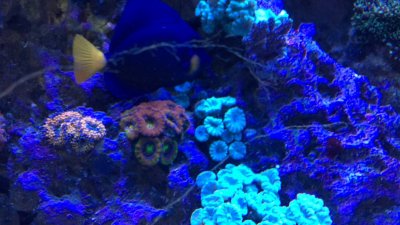Navigation
Install the app
How to install the app on iOS
Follow along with the video below to see how to install our site as a web app on your home screen.
Note: This feature may not be available in some browsers.
More options
You are using an out of date browser. It may not display this or other websites correctly.
You should upgrade or use an alternative browser.
You should upgrade or use an alternative browser.
What is this vein like growth on my glass?!?
- Thread starter boozeman27
- Start date
- Tagged users None
Are they like this ?
https://www.reef2reef.com/threads/super-freaky-cobweb-surprise-eeek.263727/
https://www.reef2reef.com/threads/super-freaky-cobweb-surprise-eeek.263727/
Mine faded with time. Basically just a bloom.
I also have a small dragonette that makes short work of the little bugs.
I also have a small dragonette that makes short work of the little bugs.
You’re welcome.Ok thanks for the info. I’ll scrape em and keep an eye out!
Yes belive the veins are a part of the spawning process. The rest of the time they just clean up the tank.
Nature is pretty cool.
Yikes! Creepy.
I kinda miss them....Yikes! Creepy.
Yeah, saltyfilmfolks is 100% right on the id. Also, the original subject of this thread made me legitimately laugh out loud.
Lol.Yeah, saltyfilmfolks is 100% right on the id. Also, the original subject of this thread made me legitimately laugh out loud.
Glass. It says glass...
- Joined
- Dec 20, 2017
- Messages
- 884
- Reaction score
- 734
Hi I'm gonna revive this thread real quick. Although I don't have a definitive answer on what these are but here are my two cents. I have the same thing in a really really dirty ten gallon that I use to breed pods and macros (kinda like a trashy fuge). I have two "colonies" at the moment. At first I though they were the silicate spindles of a sponge until I realized that overnight they would catch and kill some copepods. I don't think they are worms since a gentle tap from a toothbruh bristle cuts them in two. However, I do thik that this could be a type of primitive bryozoan which are a type of encrusting animal (like a predatory sponge). If you look at the tip of each "branch" you will see some similarities to the structure of a bryozoan's "mouth" (https://en.wikipedia.org/wiki/Bryozoa#/media/File:Ectoproct_generalized_01.png) just imagine the tentacles as the cobweb. I hope this helps! 
- Joined
- Dec 20, 2017
- Messages
- 884
- Reaction score
- 734
Nevermind the bryozoan thing. I correct my mistake and have found a positive ID. The growths are a protist called Labyrinthula that act as commsensals, mutualists, and pathogen. Now it only gets crazier from here. These guys can use algae (mainly chaeto; which they act as a mutualist), sea grasses (pathogen), and sea stars(pathogen) as host. In fact the devastating "Seastar Wasting Disease" is caused by these things. Now in reef tanks they shouldn't possess much of a problem thankfully (unless you plan to keep seagrass or coldwater sea stars). The reason that they move around is how they reproduce. They kinda just break off some cells and send them off into the water column where they eventually settle onto something . The filaments are how they move around short distances.
- Joined
- Sep 20, 2017
- Messages
- 1,091
- Reaction score
- 2,069
I'm still going with aliens.Nevermind the bryozoan thing. I correct my mistake and have found a positive ID. The growths are a protist called Labyrinthula that act as commsensals, mutualists, and pathogen. Now it only gets crazier from here. These guys can use algae (mainly chaeto; which they act as a mutualist), sea grasses (pathogen), and sea stars(pathogen) as host. In fact the devastating "Seastar Wasting Disease" is caused by these things. Now in reef tanks they shouldn't possess much of a problem thankfully (unless you plan to keep seagrass or coldwater sea stars). The reason that they move around is how they reproduce. They kinda just break off some cells and send them off into the water column where they eventually settle onto something . The filaments are how they move around short distances.
Similar threads
- Replies
- 5
- Views
- 173
- Replies
- 13
- Views
- 168
- Replies
- 2
- Views
- 142






















